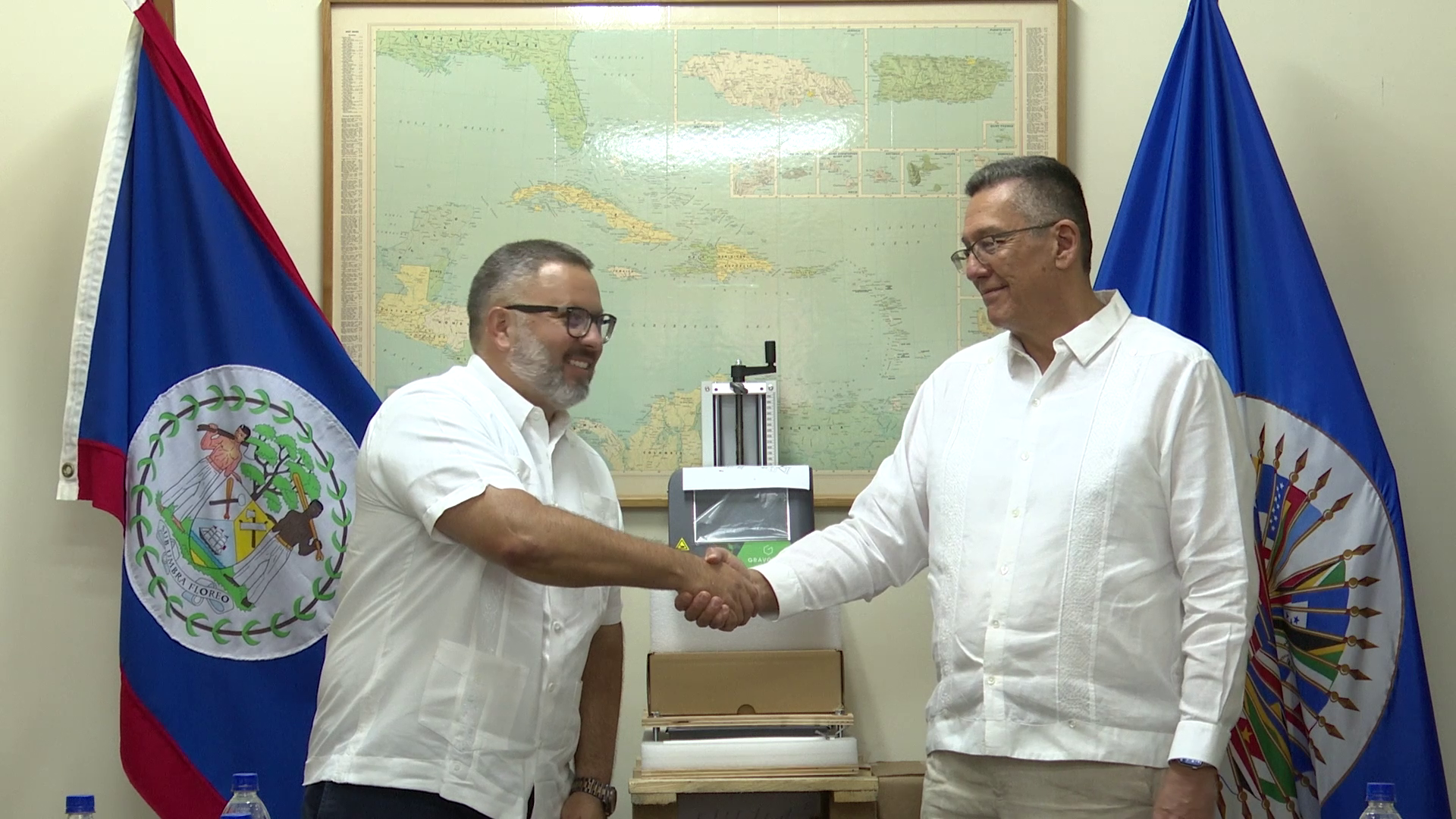In the fight against crime and the illegal flow of firearms across Belize, a new tool is now in the hands of law enforcement, thanks to a continued partnership with the Organization of American States. Today, the OAS officially handed over a third firearm marking machine to the Ministry of Home Affairs during a ceremony at its Belize City headquarters. Belize first received one of these machines back in 2011, followed by a second in 2023. Both are currently used by the Belize Police Department to mark police-issued weapons. But this third machine? It’s expected to play a broader role in tracking and controlling firearms across the country. News Five’s Paul Lopez has more on how this latest addition could help tighten the net on illegal gun trafficking. Here’s that report.
The Organization of American States (OAS) donated a third firearm marking machine to Belize today, aimed at helping track and control guns. The machine will be used by the Firearms and Ammunition Control Board as part of ongoing efforts to fight gun violence. Minister of Home Affairs Kareem Musa accepted the donation on behalf of the government.
Kareem Musa, Minister of Home Affairs
“This firearm marking machine we are receiving today, thanks to the OAS, has been used in automative, aerospace, medical and by heavy and light industries. It will allow the FACB to permanently mark firearms with unique Identification details, such as country code, serial numbers, model information and other identifying marks. Once a firearm is marked, it will enable the FACB and other relevant authorities to trace the origin and movement of firearms which is crucial in criminal investigations and will also serve as a tool to prevent arm trafficking and to hold gun owners and licensed gun dealers accountable who are in possession, sale or the use of firearms.”
Bart Jones, Deputy Commissioner of Police
“Why do markings matter? The unique markings in etched in weapons tell a story. It enables us to trace firearms from its lawful origins to the last point of possession. In practical terms this donation strengthens our investigative reach, reduces time to solve gang related crimes and most important save lives.”
OAS Country Representative, Doctor Luiz Coimbra emphasized the organization’s support for member states like Belize in combatting gun violence. He explained that this support begins with capacity building or ensuring that countries are in possession of the right tools to trace firearms and identify those being used in illicit activities.
Dr. Luiz Coimbra, Country Representative, OAS
“Today the Organization of the American States through the Program of Assistance on the Control of Firearm and Ammunition is donating a third firearm machine to the Government of Belize. PACAM is a comprehensive strategy of the OAS to support the efforts of its member states to reduce armed violence through the prevention and control of the illicit trafficking of firearms and ammunition. One of PACAM’s components focuses on the strengthening of state capacities to control and authorize access to arms and ammunition, considering the obligations of the Interamerican convention against illicit manufacturing and of trafficking in firearms, ammunition, explosive and other related materials.”
Mannon Dennison, Member, Firearms Control Board
“We are grateful for the assistance that has been given to us by OAS. Whenever we ask they reach out, whether it is for machinery, tools to assist in the fulfillment of our mandate or for training, they are always there. We are grateful.”
The machine will support the ministry and the Firearms and Ammunition Control Board in enhancing firearms traceability and strengthening controls against the illicit trafficking of these items in Belize. Reporting for News Five, I am Paul Lopez.
